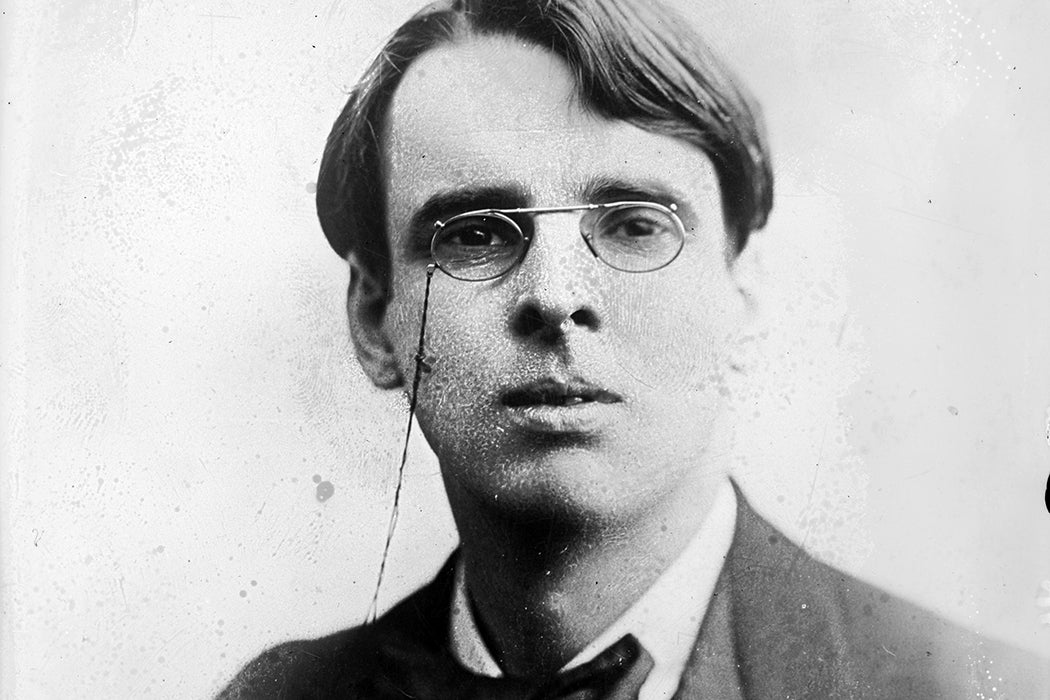Widely considered to be one of the greatest poets of the twentieth century, William Butler Yeats, born on June 13th, 1865, was the winner of the 1923 Nobel Prize in Literature and a driving force behind the Irish Literary Revival. But in the 1880s, he was a young aspiring writer living ascetically in London, and, as poet and scholar Kathleen Raine notes, one of his few possessions was “a Tarot Pack.”
Tarot, a card deck used for divination and as a tool for self-reflection, is back in a big way. The New York Times reported last year that Tarot was trending, and interviewed a Tarot reader who said “that she has seen more customers of late seeking help connecting to their life purpose, rather than answers about their fate.” Tarot has also long informed poets, providing as it does “a symbolic and interpretable language for the elusive shape of our lives.” The still widely-used Rider-Waite Tarot deck designed by A.E. Waite and Pamela Colman-Smith grew out of their involvement with the Hermetic Society of the Golden Dawn—an Order to which Yeats also belonged.
Want more stories like this one?
The Hermetic Society of the Golden Dawn began as an occult organization dedicated to the study of metaphysics and magic, founded by three Freemasons who claimed to have been inspired by a mysterious manuscript in cipher found at a British bookstall in 1884. The manuscript, once decoded, offered a coherent system for the secret organization to follow. By the mid-1890s, the Golden Dawn had attracted many celebrity members, including Maud Gonne, Aleister Crowley, Bram Stoker, and Sir Arthur Conan Doyle, and its concepts of ritual and magic (and Tarot) have had a lasting influence on Western occultism.
As Raine notes, at this point in his career Yeats had already begun to investigate the idea that “images well up before the mind’s eye from a deeper source than conscious or subconscious memory.” The Golden Dawn, its esoteric symbolism, and its promise of spiritual knowledge fed Yeats’s work. Raine points to the supernatural rituals evoked in his poem “All Souls’ Night” as being derived from the mysterious studies of the Golden Dawn. In the choruses of The Resurrection, Yeats writes of “that fierce virgin and her Star;” according to Raine, “The symbolic tradition to which the star belongs is that of the Tarot.” Raine dives deep into Yeats’s work to pinpoint other symbols he uses that derive from the Tarot—the Tree of Life, the Wheel of Fortune, the Tower, and the wandering fool.
Eventually, disputes led to Yeats resigning from the Order. In his later years, he became more interested in Irish nationalism and in the power of theater. But the occult influence remained in his work, in which one can detect hints of the Egyptian Book of the Dead, the Chaldean Oracles, and Blake’s Prophetic Books. According to Raine, who was writing in 1969, Yeats had foreseen people rebelling against the intellectual, and trying to tap into a more spiritual, vital, and groovier (hey, it was the Sixties) level of consciousness:
Even since Yeats pursued truths in his time and in our own so unfashionable, that revolt of the soul against intellect which he himself predicted has manifested itself in many ways, and the time of writing wears the aspect, even, of revolution among the younger generation, prepared to take the archetypal world by storm. Truths so vital, so intrinsic to our very nature, cannot with impunity be denied.
Throughout his career, Yeats showed a fascination with the contrasts between people’s internal and external selves, and a changing sense of his life’s purpose. It’s no wonder that he, like today’s Tarot enthusiasts, looked to the divination deck for answers.







